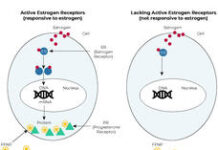According to a group of researchers led by Dr Daniel McGrail of the Department of Systems Biology, The University of Texas MD Anderson Cancer Center in Houston, TX, US, who analyzed data from patient tumours included in The Cancer Genome Atlas (TCGA), their analysis failed to support the use of high tumour mutation burden (TMB-H) as a biomarker for treatment with immune checkpoint inhibitors (ICIs) in all tumour types, including the threshold of 10 mut/Mb approved by US Food and Drug Administration (FDA). Dr McGrail and colleagues wrote in their article published on 15 March 2021 in the Annals of Oncology that future studies should focus on improving cancer type-specific assessment of TMB from targeted sequencing and cancer type-specific activity of ICI in TMB-H tumours before broad clinical implementation.
The authors wrote in the study background that TMB-H emerged as a leading candidate biomarker for identifying patients with cancer who may benefit from ICI based on potential for tumour mutations to generate immunogenic neoantigens. Majority of evidence for improved response in TMB-H tumours come from certain cancers that are generally more hypermutated (lung cancer and melanoma).
Recently, the FDA approved pembrolizumab for the treatment of patients with any unresectable or metastatic tumour with no mismatch repair deficiency or microsatellite instability (MSI) that is TMB-H and has progressed on prior therapy with no alternative treatment options. In the approval, TMB-H was defined as ≥10 mut/Mb, as determined by the targeted sequencing FoundationOne CDx assay (F1CDx), which profiles the total number of synonymous and non-synonymous mutations across 324 cancer-related genes.
The FDA approval was based on objective response rate (ORR) data from 102 patients, of which 81 were microsatellite stable (MSS) tumours across 9 cancer types treated in the phase II KEYNOTE-158 study (33% were small-cell lung cancer). The study lacked major tumour types for which approval for PD-1 blockade is lacking, including oestrogen receptor positive breast cancer, prostate cancer, and MSS colorectal cancer. In particular, those are the most common newly diagnosed cancer in women, the most common newly diagnosed cancer in men, and the third most common newly diagnosed cancer for both sexes.
The authors wrote that evidence supports treatment with ICI in certain hypermutated cancer subsets, such as MSI-high colorectal cancer. However, it is unclear if this principle is generalizable across cancer types, and what is an optimal threshold, if any, for qualifying a cancer as TMB-H for ICI treatment selection. TMB assessment and bioinformatics interpretation vary across different targeted sequencing panels, likely in a cancer type dependent manner.
Data from over 10 000 patient tumours included in TCGA were used to compare approaches to determine TMB and identify the correlation between predicted neoantigen load and CD8 T-cells. Association of TMB with ICI outcomes was analyzed by objective response rates (ORRs) in 1551 patients and overall survival (OS) in 1936 patients.
The researchers found a 39.8% ORR in cancer types where CD8 T-cell levels positively correlated with neoantigen load, such as melanoma, lung, and bladder cancers, TMB-H tumuors, which was significantly higher than that observed in low TMB (TMB-L) tumours (odds ratio 4.1, p < 2×1016).
In cancer types that showed no relationship between CD8 T-cell levels and neoantigen load, such as breast cancer, prostate cancer, and glioma, TMB-H tumours failed to achieve a 20% ORR and had a significantly lower ORR relative to TMB-L tumours (odds ratio 0.46, p = 0.02).
The ORRs were not significantly different between the two categories of tumours for patient cohorts assessed.
Equivalent results were obtained by analyzing OS and by treating TMB as a continuous variable.
In this analysis, the researchers demonstrated that classification of tumours as TMB-H varies in a cancer type specific manner across different DNA sequencing assays/approaches in over 10 000 patients spanning 31 cancer types from TCGA. They further leveraged data to divide cancers into two categories based on whether CD8 T-cell infiltration is positively correlated with neoantigen load. Then, they showed that TMB-H, as defined in the recent FDA approval as 10 mut/Mb determined in the context of F1CDx assay genes or when treated as a continuous variable, is suboptimal for predicting ORR and OS following ICI treatment across multiple cancer types where neoantigen load is not associated with CD8 T-cell infiltration.
The authors concluded that TMB-H failed to show predictive accuracy for response to ICI in patients with tumours such as glioma, prostate cancer, or breast cancer. Their data urge strong caution in using TMB as a predictive biomarker for ICI across all solid tumours.
Reference
McGrail DJ, Pilié PG, Rashid NU, et al. High tumor mutation burden fails to predict immune checkpoint blockade response across all cancer types. Annals of Oncology; Published online 15 March 2021. DOI: https://doi.org/10.1016/j.annonc.2021.02.006.







